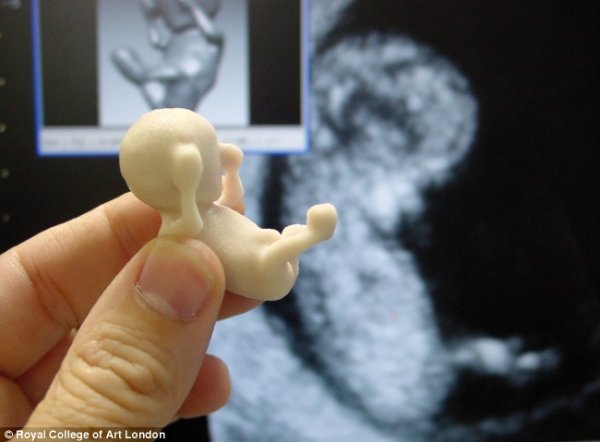
Posted on Sunday, June 28 2009 @ 22:13 CEST by Thomas De Maesschalck
A new medical technology developed by PhD student Jorge Lopes at the Royal College of Art enables parents to hold a life-size model of their unborn child. The Brazilian student has pioneered the conversion of data from ultrasound and MRI scans into life-size plaster models of living embryos. More details and photos
at DailyMail.
'It’s amazing to see the faces of the mothers. They can see the full scale of their baby, really understand the size of it,' said Dr Lopes.
'The technology can be also be used as an emotional tool for parents whose foetus might be deformed or need treatment,' added Hilary French, who heads the School of Architecture and Design Products.
A good way of understanding how rapid prototyping works is to imagine a printer that prints plastic powder instead of ink.
Then as it prints layer up layer it slowly builds up a 3D model.

